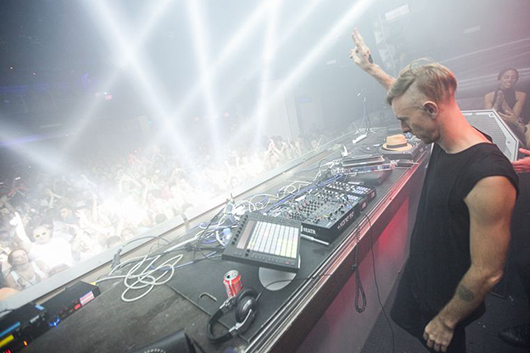ENTER. the Void: Richie Hawtin and Ibiza
Last week, XLR8R headed to Ibiza, met up with the techno legend, checked out his […]
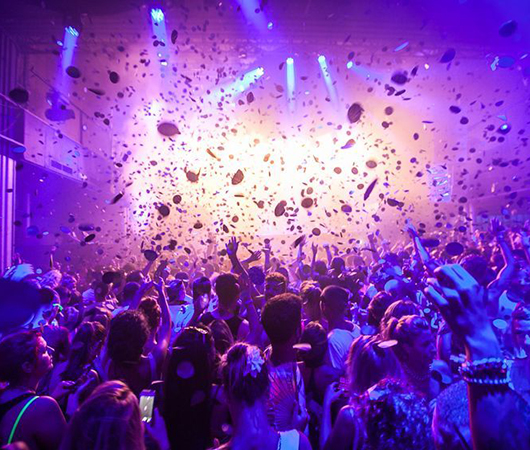
ENTER. the Void: Richie Hawtin and Ibiza
Last week, XLR8R headed to Ibiza, met up with the techno legend, checked out his […]

Last week, XLR8R headed to Ibiza, met up with the techno legend, checked out his massive weekly party, and discussed his special relationship with the island.
“It is a magic island,” says Richie Hawtin. Listening to him speak while sitting by the pool at his villa in the middle of the infamous “White Island,” he certainly sounds convincing. “I’m not mystic or anything like that… but there is some magnetism here, to bring open-minded and free-thinking people.” He continues, “There is a way of having fun here—and having freedom—and that’s why it’s a perfect island for this music… I’m not saying we’re complete weirdos or eccentrics, but we don’t live a normal life, and we’re welcomed here.”
Riche Hawtin in ENTER.Main
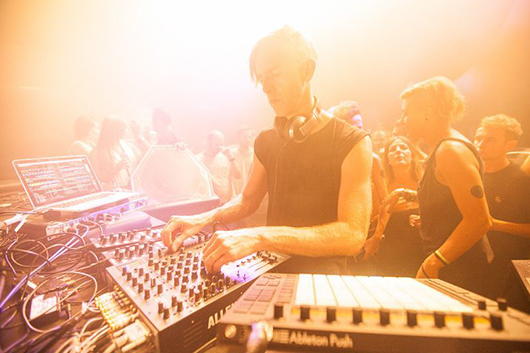
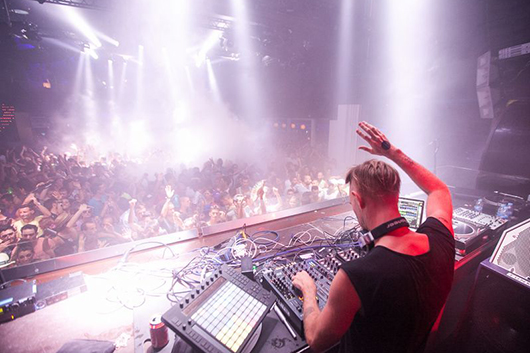
Later that night, Hawtin certainly got a warm welcome at Space, the famed Ibiza nightclub which first opened in 1989 and continues to be one of the island’s most popular venues. Along with its long-running We Love party on Sundays, Carl Cox’s Tuesday weekly, and various other nights, the venue also plays host to ENTER., Hawtin’s elaborate weekly party that just opened its second season. Following a huge opening night on July 4, expectations for this year’s second ENTER. were high, especially when the bill included the likes of Maya Jane Coles, Maceo Plex, Andy Stott, Loco Dice, Damian Lazarus, Catz N Dogz, Delano Smith, Ean Golden, Matthew Hawtin (Richie’s brother), and others, all spread across five rooms and nearly 11 hours of revelry. Though these sorts of stacked line-ups are generally par for the course in Ibiza, and don’t necessarily guarantee success, ENTER. once again went rather well; at the end of the night, more than 6000 people had come through the door. Richie Hawtin has planted his own flag in Ibiza, and it appears that people are flocking to it.
That said, Hawtin and Ibiza didn’t always seem like a match made in heaven. Though he now sings the island’s praises, and makes Ibiza his home base from late June to early October (splitting the rest of his year between Berlin and Windsor, Ontario), his initial foray into its nightlife didn’t go smoothly. In fact, he describes his first trip to Ibiza as “horrible.” That was back in 1995, when some UK techno enthusiasts brought him out for a night at Space. “I got to the club and played for about half an hour, and then the owner told me to get off because nobody liked techno,” he says with a laugh. “I hated the island. I couldn’t get off the island fast enough.”
Delano Smith in ENTER.Terrace
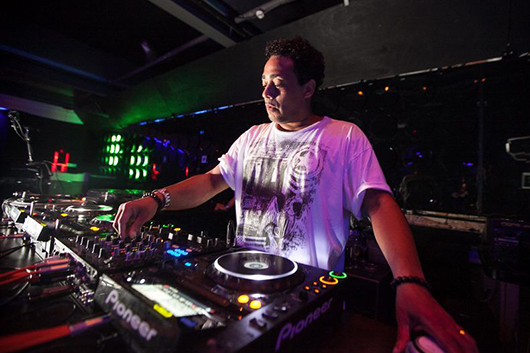
Loco Dice in ENTER.Main
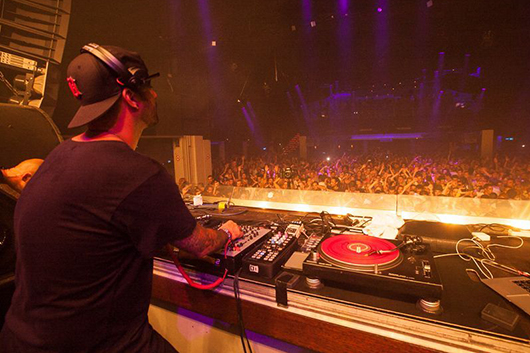
Following this rough introduction, Hawtin stayed away from Ibiza for the next five or six years, as he explains, “At that point, the last place a serious techno musician wanted to come was Ibiza. It was so cheesy, and it was ruled by commercial house music and everything that I thought was bad about the scene.” Ultimately, it took the urging of Sven Väth to get Hawtin back out to Ibiza. “He always loved this island,” Hawtin recalls. “He had a mission of coming back here and bringing techno back to the island.” This ultimately manifested in Väth’s Cocoon parties at Amnesia, which continue to run to this day. “He invited me for their first test season… and we had a really amazing party at Amnesia. Not full, just great people, a great vibe. We had a really amazing afterparty. I came back two or three times that summer, and started to see what the island could be.” He adds, “Sven showed us what could be possible here.”
Väth’s enthusiasm must have been convincing, as Hawtin became a resident DJ at the Cocoon nights for the next decade, making an increasing number of trips to Ibiza in the process. He also began to spend more of his free time on the island. “I was always in Europe most of the time, away from Canada,” he explains. “It was a great place to come and hang, get some sun, and go completely crazy.” And for a long time, that was enough. Ibiza’s techno scene was growing slowly, and Hawtin felt that he “didn’t have anything to add.” As he explains, “I was within a good family, I was happy with my sets, I loved Amnesia.” But as the years wore on, he began to see room for diversity—not just in music, but in clubs—and when Space approached him in late 2011, he thought, “Maybe the island is ready to take the next step.”
Richie Hawtin in ENTER.Main
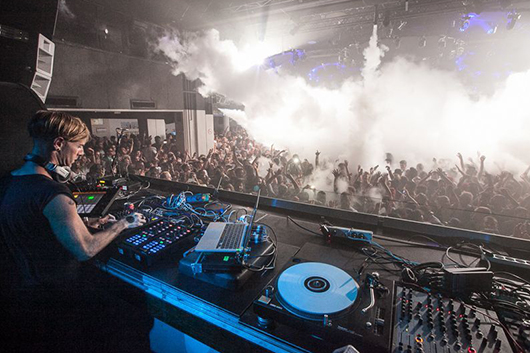
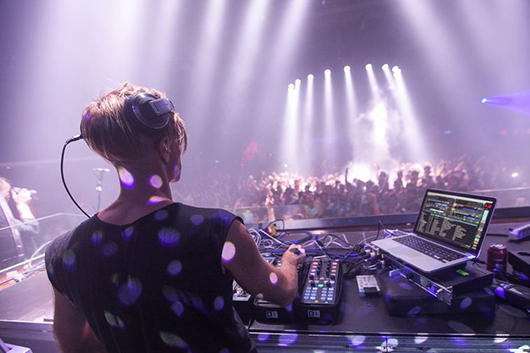
ENTER.Main
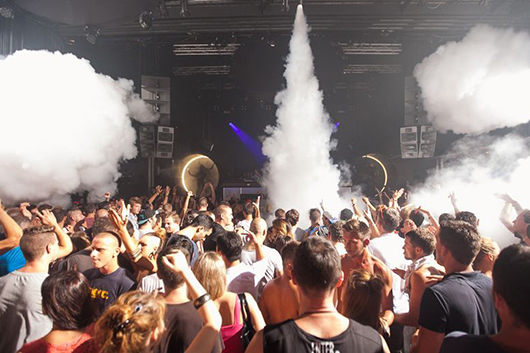
As it turned out, that next step was a large one; simply put, ENTER. is an enormous undertaking, requiring an effort that goes well beyond Hawtin simply putting together a line-up and letting Ibiza’s club economy work its magic. Although a lackadaisical approach could quite possibly work—the island isn’t generally known for its discerning crowds and Hawtin’s star power alone has plenty of draw—the veteran artist has always been intent on making ENTER. more than just another club night. “The very name—ENTER.—and the dot are about stepping into… it’s a doorway into a new experience,” he says. “When people buy a ticket to come to Ibiza, they’re already preparing to exit their everyday life, their everyday routine, their job… and they’re hoping to compress a lot of experience into a short amount of time.” He adds, “We wanted to open a doorway for them to enter the best possible experience, to send them as far away from reality as possible, and send them home with their heads spinning.”
This may sound like lofty promo-speak, but one doesn’t need to spend much time at ENTER. to understand just how much has gone into the night. On its own, Space is already an iconic venue, the sort of place that is well established in Ibiza’s clubbing lore, but the ENTER. crew has seen fit to completely reimagine the place. “Most people know Space,” says Hawtin. “We get to play with that. We get to play with everyone’s preconceived notions, or memory, or expectations. [People say,] ‘I love the terrace. I can’t wait to go. Carl Cox [on the] terrace is great, let’s go see what Rich does.’ These days, that usually means, ‘Who does Rich have playing?’ We try to have a lot of exclusive people, but there could be someone playing on my terrace who played at Carl Cox’s terrace one week ago. That’s not too interesting. So we look at this terrace and we think, ‘What does this terrace mean to people?'” He continues, “In the terrace, there’s a beautiful, typical Ibiza [rock] wall. That’s the terrace. So, first thing, we cover that wall, get rid of that wall… [we ‘ve] exited them from their memory, from their expectations, and we’ve entered them into a new place. We do that in every room, and every room is a distinct zone.”
Maya Jane Coles in ENTER.Terrace
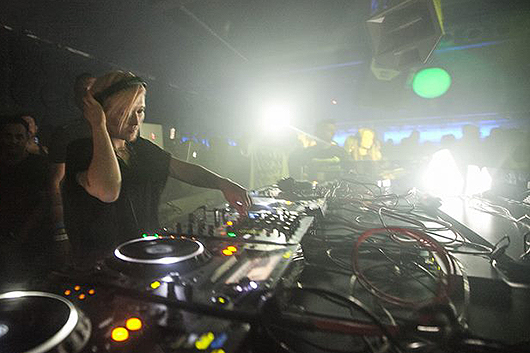
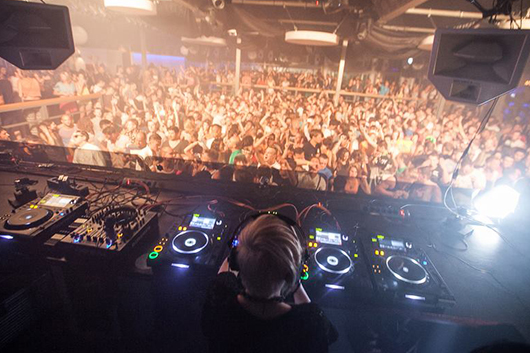
For Hawtin, this impulse isn’t new. He recalls, “In the early days of Detroit… the parties that we did then were kind of early experiments in what we’re doing [now]. We used to cover rooms with black plastic or white foam, so each area was specifically made for the music you were going to experience there.” He continues, “I think we’ve lost that. You couldn’t go to warehouses anymore, you had to go to clubs. Clubs don’t want you to do anything really, so then you get pushed to doing everything on stage. What can you do on stage? Lights, visuals, maybe some banners… it gets pretty dry pretty fast.” After years of dealing with these limitations, Hawtin wanted to do something more, something that could “take the experience to another level.” This goes beyond lights and visuals, as sound, architecture, installations, colors, and even textures all come into play. More importantly, ENTER. seeks to augment all of these aesthetic components and heighten the experience of being in one of the party’s rooms. Accomplishing this involves asking questions like, “How could you have someone walk into [a room] with no music playing, and already know what’s going to come out of those speakers, before it comes out? That’s the challenge.”
Without question, this challenge is something that the ENTER. team has taken seriously; by the time the doors open each Thursday night, the various rooms at Space barely resemble their former selves. There are five distinct areas, all of which have a different feel, and though the large Main room and aforementioned Terrace are the best suited for dancing, the Sake and Mind zones are perhaps more impressive. The former is a byproduct of Hawtin’s espoused passion for Japanese culture and sake in particular. ENTER. literally transforms the front room of Space into a makeshift sake bar, complete with Japanese-style decor, wood paneling, and a soundtrack piloted by Japanese-born resident DJ Hito. (Each week, Hito is preceded by a “name” DJ who warms up the dancefloor; last Thursday, it was Crosstown Rebels boss Damian Lazarus, who dropped a set of bouncy, standard-issue tech house.) Sake is the first room to open at ENTER., and every party actually begins with a sake tasting hosted by Hawtin himself; furthermore, he’s commissioned three different kinds of sake especially for the party that can only be purchased at ENTER. There’s an entire custom sake cocktail menu—granted, the drinks are all in the neighborhood of 20 Euros each—and if that wasn’t enough, Hawtin has arranged for limited-edition, ENTER.-branded onigiri snacks to be specially made and flown in from Berlin for the party each week.
Damian Lazarus in ENTER.Sake
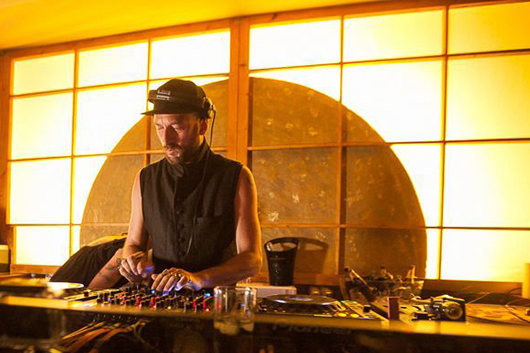
ENTER.Sake
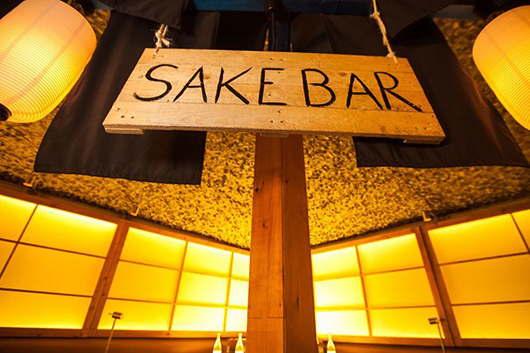
DJ Hito in ENTER.Sake
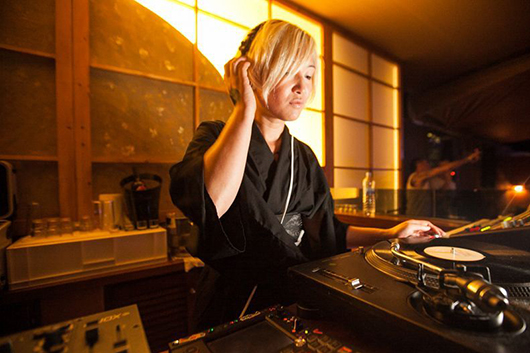
Then there’s Mind, which sees ENTER. outfitting Space’s salon room with opaque layers of mesh, red lights, and countless other elements, all in an effort to transform the space into a dark and ominous little cave. During our visit, Mind’s music was provided by ambient maestro Matthew Hawtin and brooding techno experimentalist Andy Stott, both of who are incredibly progressive by Ibiza standards. (Future Mind guests will include Vatican Shadow, Function, Lee Gamble, Vessel, Claro Intelecto, Miles Whittaker, and Emptyset, to name a few.) And though the music was genuinely interesting and the room had an appropriately spooky vibe, it would be difficult to categorize Mind as a success, especially when many clubgoers simply saw the space—which was one of the few areas of the club without an ever-present 4/4 pulse—as somewhere to sit down and chat. Hawtin—who enthusiastically describes Mind as his “favorite” room at ENTER.—was ready for this possibility. “I was very aware that it may not work completely,” he says. “People don’t come to the island to be stuck in a dark room listening to Demdike Stare or Andy Stott. I love these guys, and I think it’s very important that there is a place for them on the island, but it’s a new thing.”
As intriguing as these niche elements are, ENTER. is still very much a party, and a big one at that. And while electronic music diehards accustomed to more intimate (or even medium-sized) affairs may scoff at the potential fun quotient of any party with five rooms and 6000 clubbers, Hawtin doesn’t equate a party’s size with its quality. “If I say that I like to play in a small room, I do,” he asserts. “But do I like to play in a small room with not a very good crowd? Or where the soundsystem is not good or I can’t hear my monitors? No. I think small rooms are usually run by very inspired, driven individuals where it’s small enough that they have their attention on all the details that matter. That’s what we’re doing at ENTER. I’m quite sure that 95% of the artists that come through and play at ENTER. are going to have the time of their lives on this island. That’s what it’s all about.”
Matthew Hawtin in ENTER.Mind
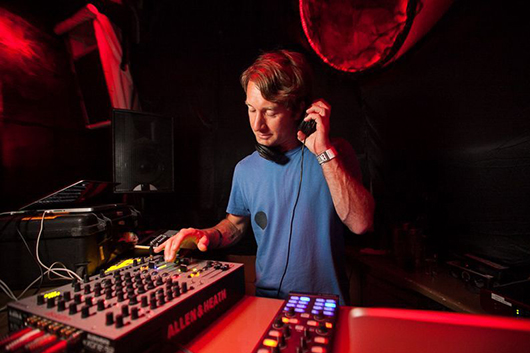
Andy Stott in ENTER.Mind
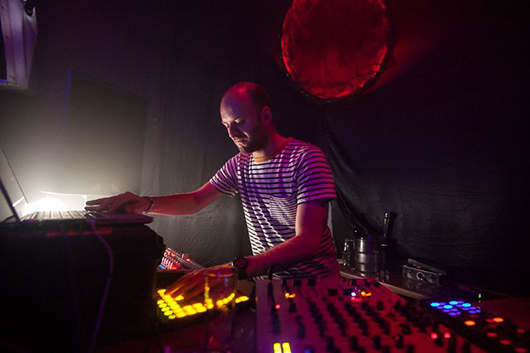
An ENTER. dancer during Andy Stott’s ENTER.Mind set
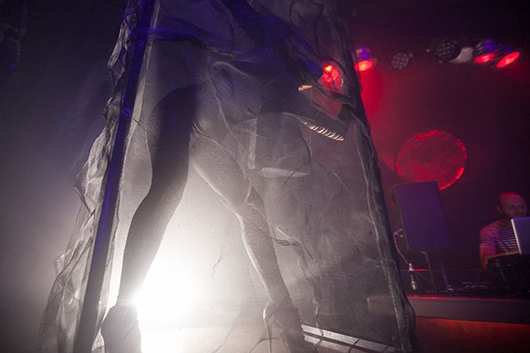
We didn’t get the chance to poll all of the artists about their experience at the party, but the lead-up to ENTER. definitely found Hawtin backing up his words with actions. Some of the DJs actually stay in his villa, and those who don’t are instead invited to spend a few days relaxing in a nice hotel alongside the ocean. On Wednesday nights, he invites all of the week’s acts (along with a select group of friends) to his villa for what he’s dubbed the “creatives dinner,” and that’s followed up by an even larger pre-party dinner on Thursday night. On Thursday evenings, Hawtin hosts a live broadcast on Ibiza Global Radio with one of the night’s guests; last week, Maceo Plex came along to spin, not just for those tuning in, but also for a select group of ENTER. fans. Each week, a handful of ENTER. diehards are invited to come down to the studio to dance, hang out, sample some sake, take photos, and get up close and personal with Hawtin. Given his status as one of the world’s biggest DJs, one might expect him to remain aloof during all of this, but he actually takes the opposite approach. During our time in Ibiza, he proved to be not just personable, but widely available, whether he was pouring sake for fans at the radio station or excitedly hopping from room to room at ENTER. to check out the various performers. Even after more than two decades in electronic music, it’s clear that he’s still got a lot of passion for his work.
Of course, without that passion, it’s unlikely that ENTER.—or any of Hawtin’s endeavors—would work as well as they do. Hawtin describes himself as someone who’s “pretty hands-on everything,” and the veteran artist has plenty on his plate. Apart from ENTER.—for which he oversees all the booking while conceptualizing and editing all the designs—he also continues to run the Minus label and the Clonk booking agency. While the day-to-day duties of those outlets are handled by managers, Hawtin nevertheless maintains an important role, particularly with Minus, for which he still does all of the A&R and directs the artwork. There’s also the responsibility of being Richie Hawtin the DJ, which means trawling through promos—he estimates that he receives about 10,000 tracks every two weeks—and, of course, traveling the globe for gigs each weekend. It’s a hectic schedule, and one that drains his creative energy—he laments the fact that he hasn’t been producing as much of his own music as he once did—but Hawtin nonetheless appears invigorated by it all. “If you’re going to have a successful business or project or idea, you have to live the fucking dream and go for it,” he says. “If you don’t believe in it, nobody else around you is going to believe in it. And if you don’t work hard, nobody else around you is going to work harder than you. So if I expect everyone to work 12 hours a day, 18 hours a day, then I’ve got to set the example.”
Carl Cox and Richie Hawtin in ENTER.Sake
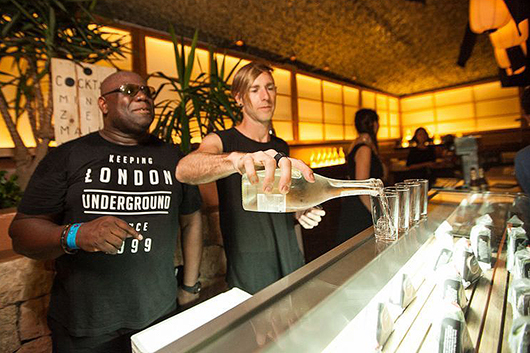
Richie Hawtin in ENTER.Main
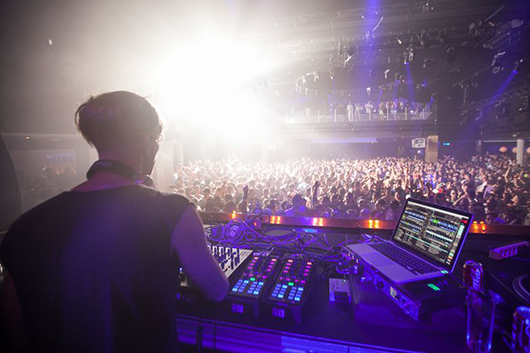
Listening to Hawtin speak, it’s apparent that the man has a lot more than just an overzealous work ethic going for him. He’s intelligent, thoughtful, and incredibly well spoken; more importantly, it’s clear that a whole lot of planning and deliberation goes into every aspect of what he does. For instance, take ENTER.’s ubiquitous dot; to some, it might appear like a simple logo or a clever manifestation of the party’s concept. But Hawtin has made it the symbol of an entire brand, not to mention a badge that many Ibiza clubbers are more than happy to identify with. Walking through ENTER., it felt like every third person had pasted a temporary tattoo of the black dot somewhere on their body. A veritable clan was being formed, and membership could of course be enhanced by purchasing any one of the numerous pieces of ENTER. merchandise which were on sale at Space, and that was after spending 50 Euros just to walk through the front door. For all of the party’s aesthetic and artistic merits—and there are many—ENTER. is most definitely a commercial enterprise, and a successful one at that.
Of course, ENTER. isn’t the only example of Hawtin’s willingness to participate in some of the more commercial aspects of the electronic-music sphere. Although it would be a stretch to say that he’s embraced the so-called EDM world, he’s often one of only a handful of “credible” acts at large-scale electronic festivals in the US and he’s also been open to engaging artists like Skrillex and Deadmau5 in public conversation. Although he’s still quick to hail the pioneering efforts of Sven Väth and happily cites labels like Modern Love and Ghostly as inspirations, he’s also not afraid to declare his admiration for an artist like Skrillex. “I really like [his] attitude,” says Hawtin. “He’s young, he’s in control, he’s got his label, he’s got a great team around him. Like him or his music or not, he’s on his own mission, and he’s got this independency, which is very important to keep right now.”
Ean Golden in ENTER.Air, a semi-open-air zone on the upper level of Space
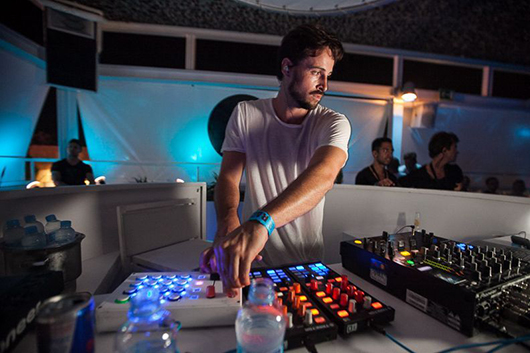
Maceo Plex in ENTER.Terrace
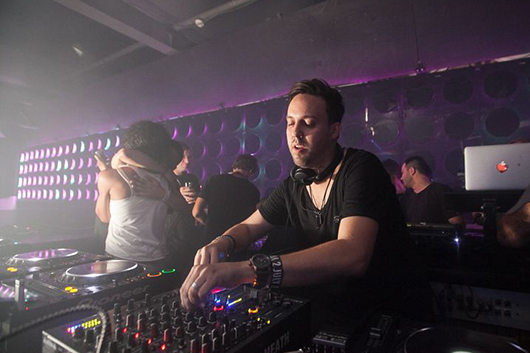
Catz N Dogz in ENTER.Terrace
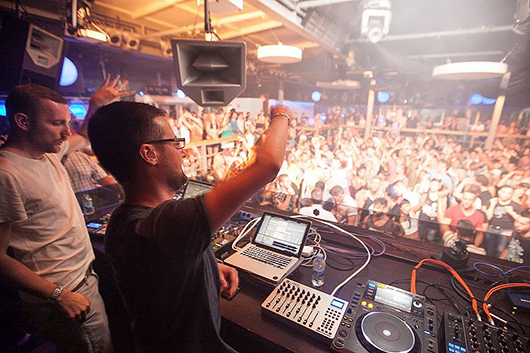
Techno purists might be turned off by these kinds of assertions, but Hawtin’s viewpoint is a pragmatic one. “If we don’t engage with the next generation, there won’t be a next generation,” he says. “We’re all getting older… and not everyone stays in this culture for life. At some point, many people pack up their adolescence and youthfulness, go to work, and maybe they listen to that music they’ve been listening to, but they don’t really progress so far. We always need an influx of young, creative people with lots of energy, and that’s what the EDM boom represents.” He adds, “There are thousands of [fans] who are coming through Avicii or coming through Deadmau5, and it’s no different than… there are so many people who are underground purists, North Americans, who found their way into electronic music in California in 1995 wearing day-glo colors and having PLUR tattooed on their foreheads. We laughed at some of those people then. Some of those people went off into normal stuff. But some of those people got deeper and deeper and deeper. You never know who is going to step through the door, how they’re going to step through the door, what they’re going to be wearing. But if they step through the door of electronic music, I think we have to welcome everybody, show them the diversity of electronic music, and let them find their way. Maybe give them a torch, so they can find some of those dark corners, and that’s what we do. We give them torches to come down into our dark side of the cave.”
Hawtin knows that what he’s offering goes deeper than the average EDM experience, but he’s also savvy enough to realize that he’s not necessarily on the bleeding edge of electronic music either. Continuing the cave analogy, he says, “Beyond me, or what we’re doing here… there’s always another corner that’s deeper and darker. Through me, hopefully people find Demdike Stare or Carsten Nicolai or they go on their own unique journey.” At this stage in his career, Hawtin represents another sort of gateway for the masses, and ENTER. is a manifestation of that. By the standards of someplace like Berlin or London, or even the more discerning corners of places like New York, Montreal, and San Francisco, the music we heard at ENTER. wasn’t particularly avant garde or forward. Furthermore, the crowd wasn’t particularly music-savvy, although it was certainly enthusiastic. Though the inclusion of Andy Stott and Matthew Hawtin were nice touches, the bulk of the evening’s soundtrack consisted of big-room house, tech-house, and techno. None of it was bad—highlights included Maya Jane Coles’ pleasantly bumping grooves, Maceo Plex’s surprisingly ravey session, and Hawtin’s own marathon set of festival-ready linear techno—and the audience unquestionably loved it, but despite all of the star power on the bill, the various DJs at ENTER. mostly colored within the lines.
ENTER.Terrace
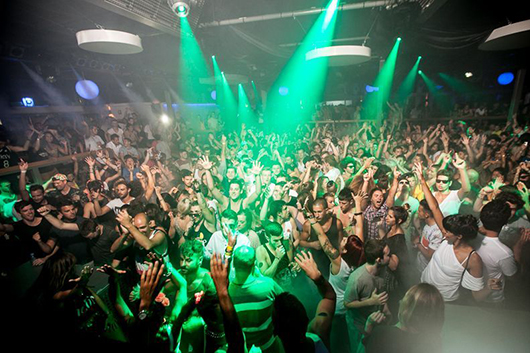
An ENTER. dancer inside one of the turbines on the ENTER.Main stage
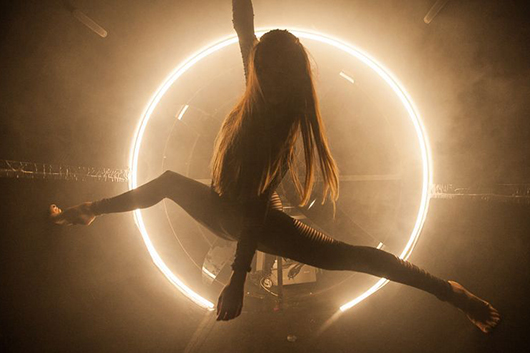
At the same time, seriously taking issue with the music at ENTER. would require ignoring the larger context of the party itself. Regardless of what artists are involved, ENTER. is a huge weekly event happening in Ibiza, a place that has long been an epicenter for some of electronic music’s worst tendencies. It’s a massive party with a little flash and a lot of bells and whistles that primarily caters to young tourists coming to the island, often with the specific purpose to party like mad and “get crazy.” ENTER. may not be for everyone—although Hawtin would likely say that everyone is certainly welcome—but by the standards of the island, the party is absolutely pushing the envelope. Furthermore, even if ENTER. is only offering only a small window into sounds that are deeper or more interesting, innovative, or experimental, that still represents progress, and that’s what Hawtin is seeking. “My philosophy or outlook or thought pattern has always been about the long term,” he says. “Even if [people] don’t agree with every decision or piece of music I put out, or promotion thing I do or gig, the overall thing is something that has momentum, it has integrity, and somehow it’s challenging and building upon itself.” He adds, “Electronic music has to be forward thinking. It has to be about what’s next… It’s why we say ‘ENTER.’ and ‘Take the next step.’ It may not be a huge step. We may take a sidestep, but we’re trying.”
Richie Hawtin saying goodbye to ENTER.Main
